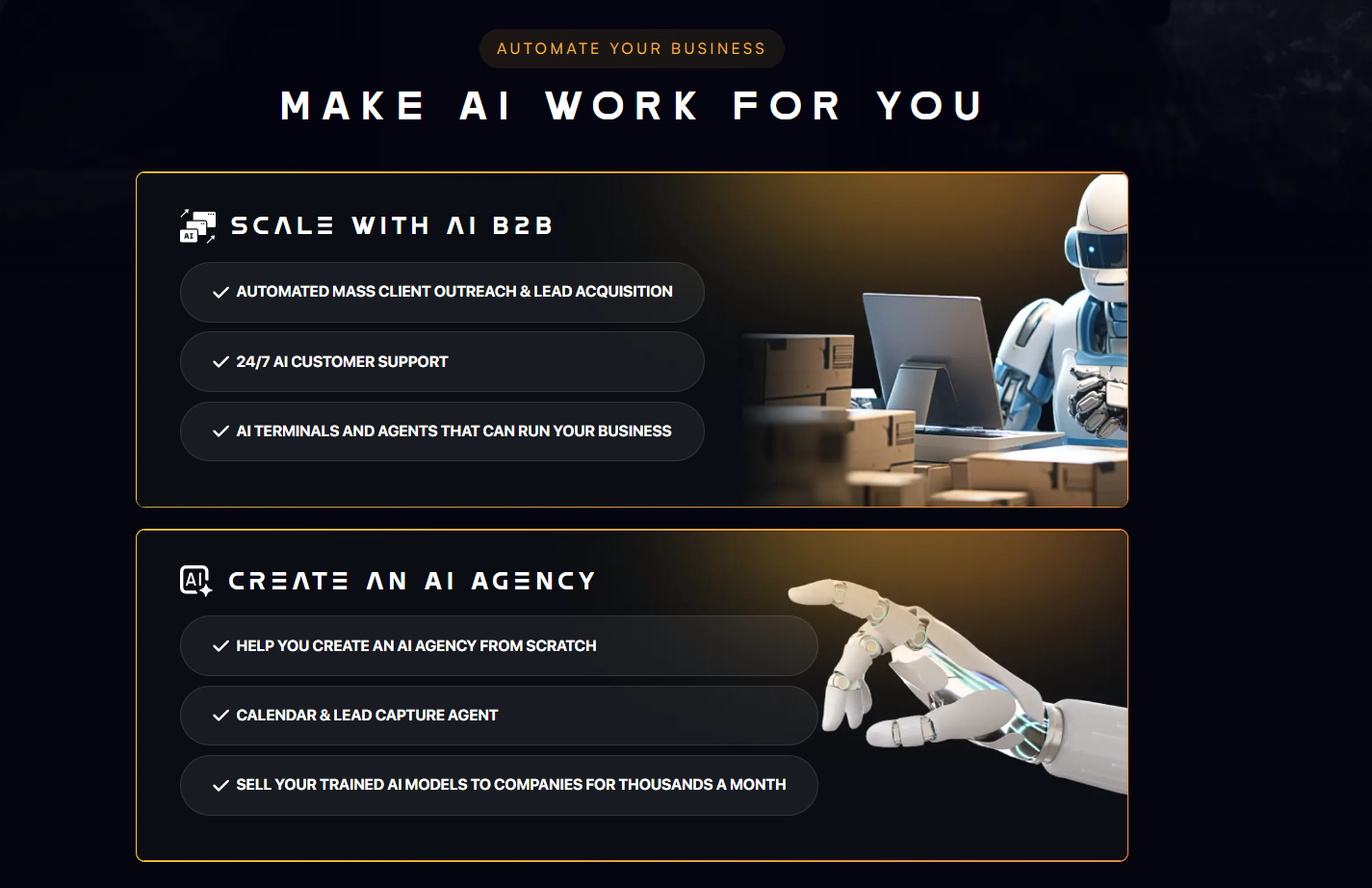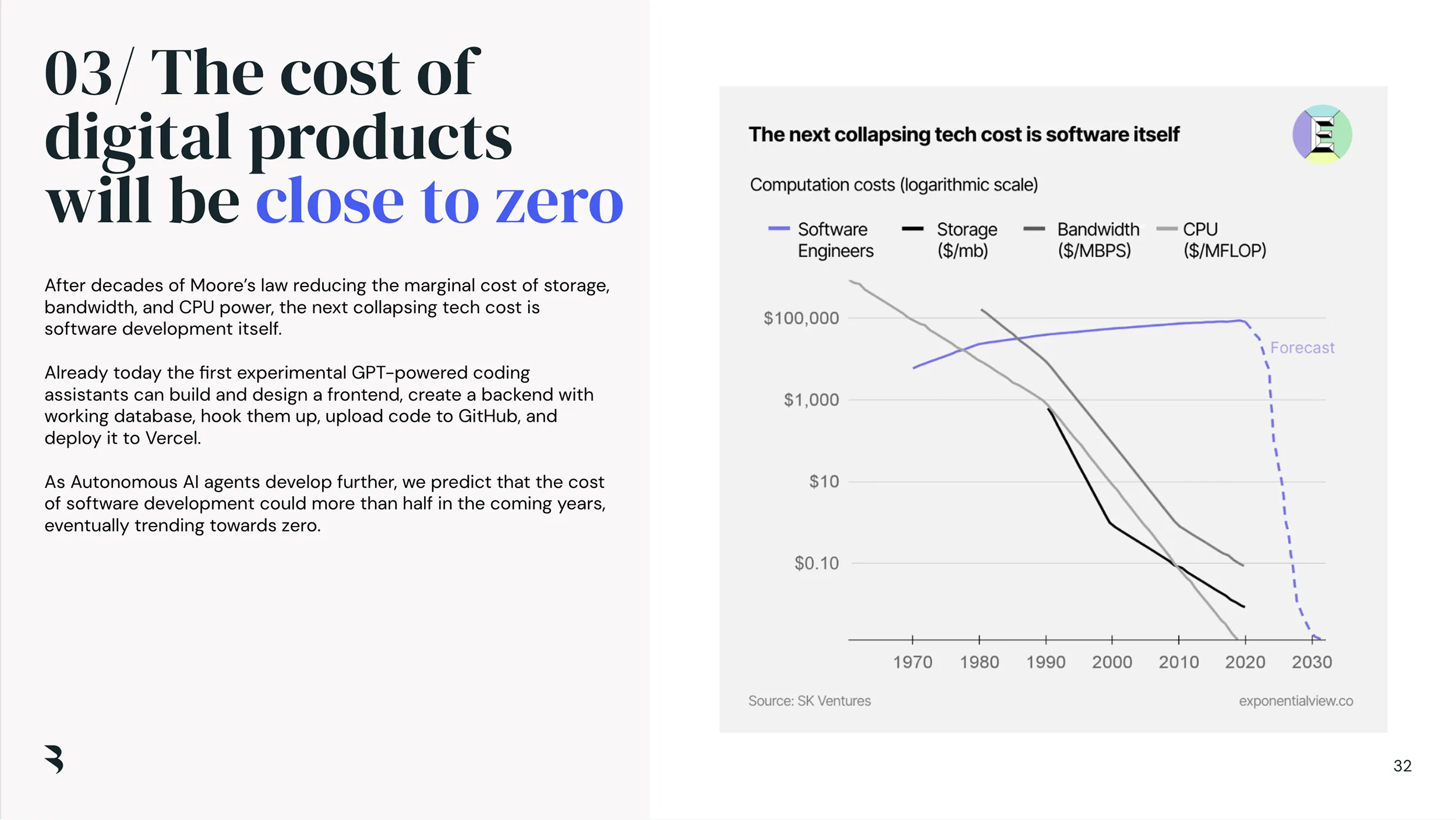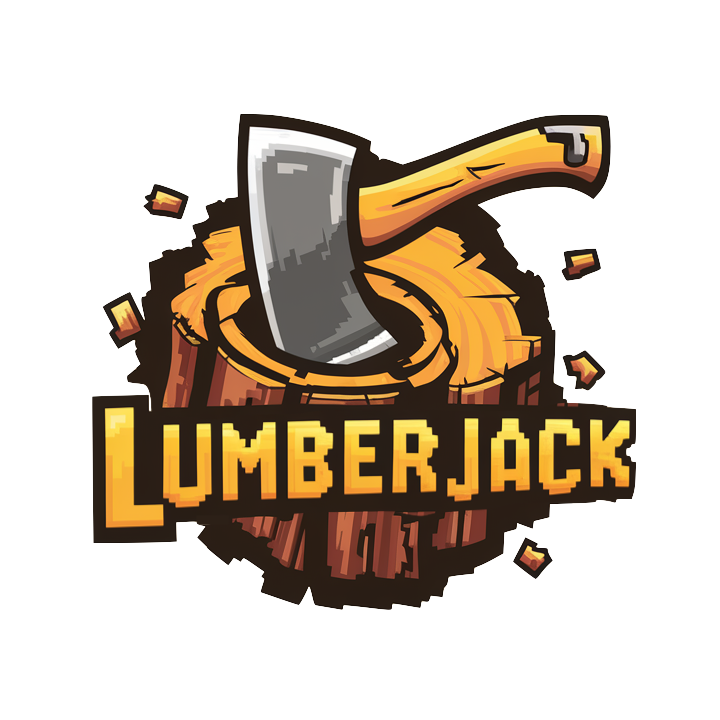Become a no-code developer
Learn how to upgrade them to agentic automation
Learn how to package them into single-feature SaaS
Become a freelancer
Register on Upwork and get clients
Build automation for others
Charge per hour ($50-100) or per project ($1-5k) to build automations
Create case study
Find similar companies
Validate by selling
Create mockup for your automation as a single-feature SaaS
Create a simple landing page to capture waitlist signups
Drive similar companies to waitlist landing page
Offer LTD ($100) to 100 buyers)
If it sells out, build it
Trigger word of mouth
Launch your app to LTD buyers
Schedule calls with users
Figure out how to make them love it
Keep doing it until word of mouth begins
Okay, that was in medias res.
Let’s unpack this.
As you can see, many content pieces are missing. I’ll be writing about those over the next few months and update this post with links.
I’ll also follow these steps publicly.
Disclaimer, before I turn half the internet against me: There is a time and place to position and sell yourself as an expert. If you want to work with clients, by all means, build an agency.
The Zerg of Entrepeneurship
I mean do you really want to compete with the bros coming out of Andrew Tate’s AI Automation Campus?
The whole concept of an AI Automation Agency has been bastardized to bits. Sadly.
By the time you get to a client, they’ll be steamrolled by one of Tate’s minions and their exorbitantly inflated claims. I mean, just look at this:

Make AI work for you.
Ugh.
Here’s what the image above means: an army of so-called automation experts will flood the market in 2025 claiming they build and deploy AI agents. In reality, they will mostly sell prebuilt mediocre automations, call them an agent, and charge high ticket prices for them.
Quite a lot of companies will be burned by these bros and when the clients get inevitably disillusioned or worse, they’ll reach out to freelancers for actual solutions.
I saw the same thing with social media management agencies.
I built a SaaS that was managing Facebook Ads budgets using AI back in 2015. By then social media ads had become somewhat ubiquitous. Loads of people knew how to get value from ads, yet most businesses weren’t doing it. This meant that most social media ads were managed by traditional, slow-moving marketing agencies.
Then one day the likes of Iman Gadzhi came around and all of a sudden every 17-year-old kid wanted to be a high school dropout to make millions by running an SMMA.
(I mean Gadzhi is a phenomenal businessman and I think one of the few well-meaning ones among these gurus, notwithstanding his antics.)
So in around 2019 the small business world was met with an avalanche of teenagers drunk on dollars charging exorbitant prices for simple ads services.
90% of them went down the drain. Then they all moved on to the next thing.
So I don’t think building an AI automation agency is the best thing you can do unless you want to battle with the Zerg of entrepreneurship:
A swarm of opportunistic agents without actual understanding of what they’re doing.
In the short term, you’d be dealing with the above.
In the long term, you’d be dealing with this:
- No idea where to find clients
- No time for anything as you juggle between sales and delivery
- Once you start getting clients, you can’t increase revenue without hiring
- You suddenly need to manage a team
- To keep margins, you need to raise prices, which will attract larger projects
- This will slow down your sales process
- You’ll manage overhead and work your ass off
- If you haven’t run an agency before, you’ll be missing deadlines, battling with cashflow issues and burnout
- This will keep going on for 2-3 years until you figure out your equilibrium
- Then you can go out and find a therapist and a new family because your current one will have left by then
This is a business for hunters.
You need to create a steady stream of leads in your company to convert them into projects. Depending on your appetite, your team will grow to a certain size. In the beginning, you do everything, so you’ll be locked in.
No way to pivot.
The Holdco Strategy
The alternative is the “holdco” strategy. Instead of services, build a product business.
Build single-feature SaaS solutions that are so uniquely specific to an infinitesimally small niche, that you become a no-brainer option.
You still take service clients in the beginning, but you scale by productizing your output, not productizing your service.
Hello, indie hackers
Indie hackers have been following a similar logic for a long time. You can read up on them via Indiehackers or follow people like John Rush or Pieter Levels. Pieter also wrote a book called MAKE, below is a really good summary of his strategy (it’s long).
Since the value is not in your service but in your SaaS, there are more pathways to success. This is what John Rush said in an interview.
A few months ago, I realized that the GPT hype was over. It’s not the “next big thing” as most thought so the traffic dropped (but still pretty good). The directory and community required time. And I prefer running directories on auto-pilot.
I decided to sell it to someone who can invest time in it. I posted on X that I wanted to sell it for $15,000. I had 3 DMs in about 5 min, I sold it to the first one.
Selling an agency is absolutely impossible until you grow it to the point it doesn’t make sense to sell. Or you developed Stockholm’s Syndrome and don’t want to. But if your SaaS is bootstrapped and have a few clients, you can almost always cash out, even if at a low price.
Build microSaaS for microexits
When I started in SaaS in 2012 it was a very illiquid market. Lots of companies didn’t even understand SaaS. Now it’s different. SaaS is ubiquitous. You use software as a service more often than not.
Today you have marketplaces like SaaSqure or Microns where you can sell your SaaS app. You can sell even if it’s not a wildly successful app because someone might know how to put it on a growth trajectory and see a great opportunity in buying your app from you.
The big problem with software is that it’s risky. Most of your apps will fail and they require full-time commitment from you all the time, especially if you raise VC funds.
At least that’s what it looked like 10 years ago. Today it’s different, but not because there’s some magic sauce that will make you smarter than the market.
Thinking you can beat the odds is delusional. The failure rate will still be incredibly high.
However, you can do two things:
- Reduce the cost of building apps to near 0.
- Reduce time between attempts at new projects to a minimum.
How to build apps for free
This is why you need to work as a freelancer building simple, single-feature solutions for others. Your opportunity is to productize the output of your freelance work.
The difference between freelance work and an agency is simple: you don’t scale. You take on very few clients, maybe one or two at a time only. Something you can handle without any overhead. Keep it stupid, simple.
I’ve been working with clients since 2012 when I founded a small web development agency. After a year I noticed that most of our projects were built on the Facebook Marketing API solving similar problems. So instead of building variations of the same thing, we started building SaaS solutions. That’s how my first SaaS company was born which led me on an incredible adventure that lasted for over 4 years.
I hesitated about sharing this video from 2013 (!) where I was pitching my startup at BabelCamp in Brno. Looking back now, it’s pretty cringe and my accent is terrible.
But it’s a good laugh so here it is: Yours truly from 11 years ago; a 22-year-old worryingly underweight kid in an oversized shirt and with a huge chip on his shoulder:
This kid ended up raising half a million dollars, moving to London, working with major media companies like Haymarket, BBC, WSJ or Digital Trends before crashing the whole thing into the ground and going bankrupt in 2017. (That’s another story.)
I learned back then that if you want to build a product startup, someone must pay for it because there will be upfront costs. One of four people will end up paying for building your app:
- You, out of pocket
- An investor if you’re lucky and know people with too much cash
- Users through preorders or lifetime deals
- Service clients who want a custom solution that later gets productized by you
By far option 4 is the lowest risk because this way your product starts out as a service.
This strategy also keeps the lights on while you’re experimenting, meaning you won’t be locked into an undesirable setup like with an agency or a SaaS.
Since your overhead is near zero, you can just keep taking on freelance customers and try again until you get it right.
Bonus: If you build the backend of your software on no-code platforms like n8n and use SaaS boilerplate, you will be able to create these SaaS apps REALLY quickly, but I don’t want to rush ahead.
The way of a thousand apps
The cost of creating custom software is tanking.

Enterprise SaaS will find margins in services and integration and small business SaaS will become a race to the bottom. The only way to counteract it is to create super simple, very niche-specific apps. Sooner or later we will get to a point, when even these apps won’t be viable, because AI will just create whatever software we need, like a Universal Solver (I wrote about it here).
But there is a lot of stuff that needs to happen in the world and I see no indication they’d happen very soon. Which is why I say that we’re not feeling the AGI (this one has a follow up article, you can read it here)
So what do these ultra-niche vertical micro SaaS solutions look like?
For example:
Create user-generated content to promote your Circle.so community
This is the app I’ll launch once I’m done with my CGM project.
Then I’ll launch a few others, like Promptivity or Plain.
If you want to make 2025 the year when you become a solopreneur, follow my journey to see how it all goes splendidly (or terribly).
I will not only share my journey of how I’m progressing with these projects and build everything in public, but I will also create tutorials on it.
In my next article, I will give you a tutorial on how to set up your own n8n instance for free, even if you’re not tech-savvy at all. This will give you an almost free alternative to Make.


